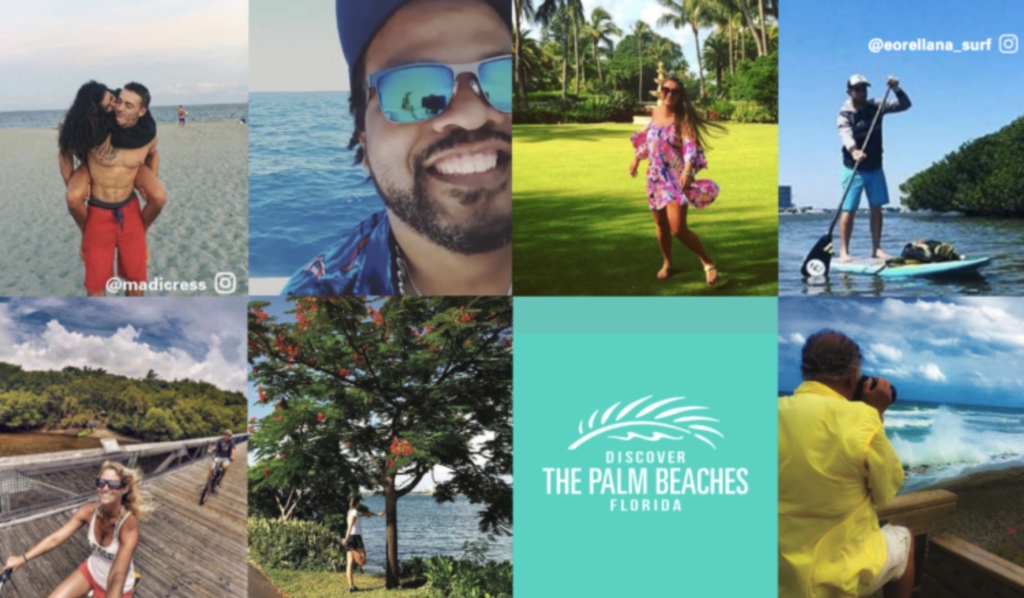
I’ve discovered four main challenges that are holding back destination marketers from attracting new visitors:
1. Creating relevant, engaging content. On average, leisure travelers are only visiting 4.4 unique sites before booking, a massive decline from the past where research suggested upwards of 38 sites (Fuel Travel and Flip.to) It’s more important than ever to stand out and make an impression. Posting valuable and frequently updated content positions you as an authority in your space and helps you build relationships with potential visitors during the planning phase. Examples of content include blog posts, articles, infographics, podcasts, listicles, company news, online reviews, checklists, surveys…and VIDEO (Did you know you’re 53 times more likely to show up on the first page of Google when you use video? Check out our blog post “18 Reasons You Need Video” for more info!)
2. Using that content to generate website traffic. The average web user doesn’t go past the first five listings on a search engine results page and 75% of users won’t scroll past page one (HubSpot). The right content can boost your search engine optimization (SEO) and help you get found. Come up with a list of keywords that people looking for information about your destination would use when searching, and incorporate them into your online content. The Google AdWords Keyword Planner is a great help, especially in identifying words and phrases people are using in their trip research which you might not have thought of. Adding internal links to your content can also help you get found. An internal link is text within your content that is hyperlinked to another relevant page on your website. Internal links help search engines index your site, pick up on your keywords, and improve the page rank of the pages that you link. It’s also a great way to lead users to additional information they may be looking for.
Pro tip: Get an SEO audit of your website, performed by a reputable digital marketing company. The audit will determine areas where more work is needed to improve your search visibility and a recommended strategy on how to optimize your site.
3. Converting that traffic to tourists. Make it as easy as possible for visitors to your website to find what they need quickly and easily. Nearly 70% of people travel to a destination after receiving a visitor guide and 69% of these people stay in hotels (WACVB Education & Research Foundation) but too many DMOs make their visitor guide hard to find. Put it front and center, above the fold; not hidden in the footer or a drop down menu. Also, push out lots of user-generated content. It gets more engagement, it’s considered more trustworthy, and it’s more effective at increasing conversions. You’re giving a platform to people who have been there and want to rave about it. It’s other people talking about your destination, instead of you as a sales and marketing organization. Discover The Palm Beaches Friends Trust Friends. Not Ads campaign generated a 23% increase in overnight visits to the destination, compared to a non-user generated content campaign in 2015.

Pro tip: Get a User Experience audit of your website, performed by a certified User Experience designer. A UX audit identifies the good and bad parts your website, barriers that exist for users, and provides recommendations on how to improve the user experience of the site – helping to increase conversions and lower the cost of acquisition.
4. Using outdated marketing tactics. Even in today’s digital age, many in the travel and tourism industry – like TPAs, DMOs, CVBs, museums, casinos, resorts, attractions and events – still rely too heavily on marketing strategies which don’t allow them to target, optimize, measure, and track their return on investment. I like to see around 70% of the marketing budget go to digital, because roughly 70% of people’s time spent with media each day is online. Because 85% of leisure travelers decide on activities only AFTER having arrived at their destination (Think with Google) you must be found online when and where visitors are searching. In the past two years, there’s been a 900%+ growth in mobile searches for “________ near me today/tonight” (Google data) Beat the competition by putting your brand in the minds, feeds, and faces of visitors at the right moment. See our blog post for a few pro tips to consider.
Advance Media New York is a digital-first marketing and media company which helps destination marketers tell their story and reach new people. We own and operate NYup.com, the premier site for and about Upstate, averaging 12 million monthly pageviews from 1.7 million users. Advance Media New York is a member of The New York State Tourism Industry Association (NYSTIA) and a proud sponsor of their annual Tourism Conference.




